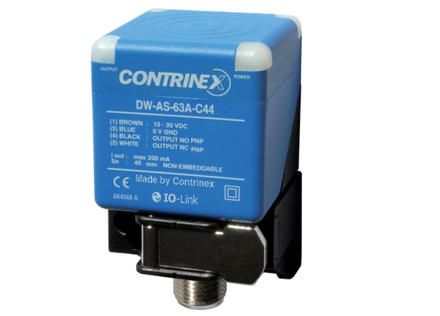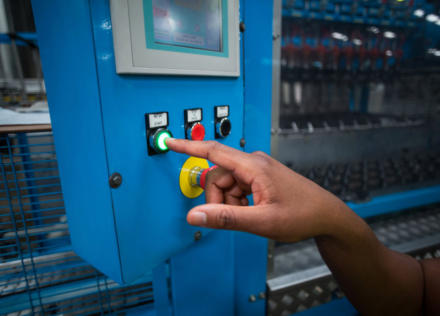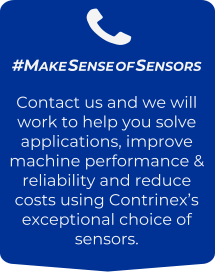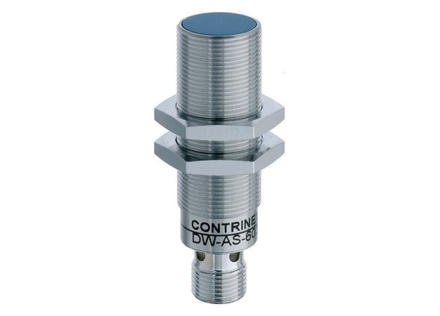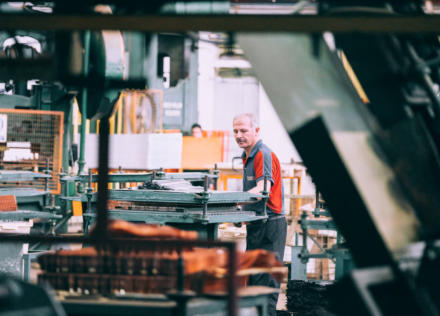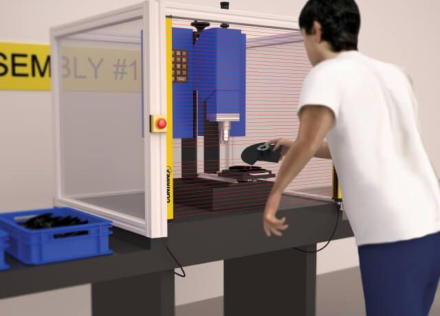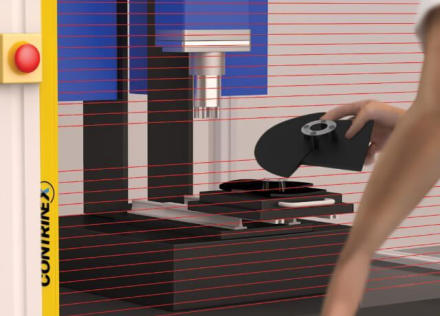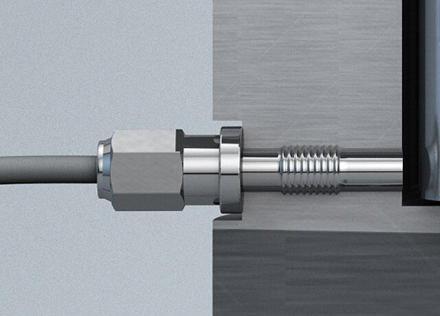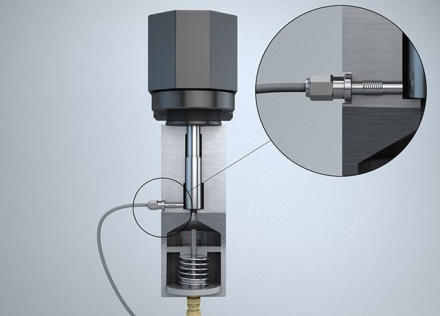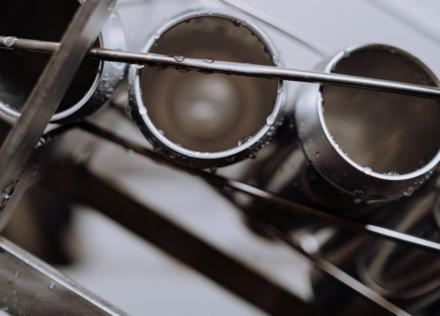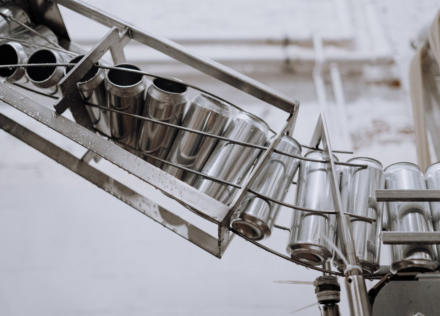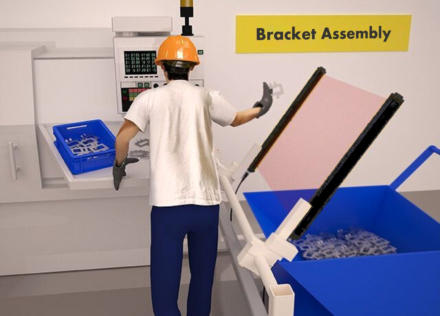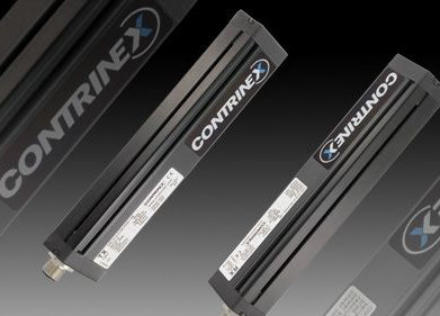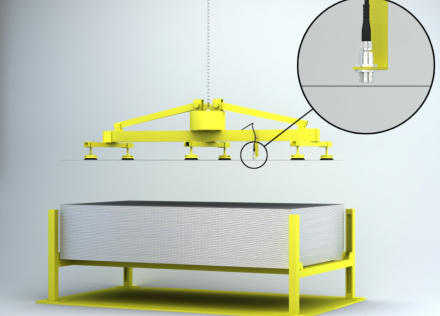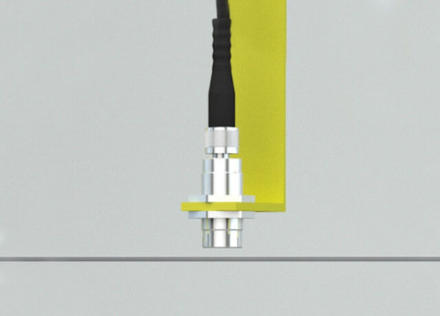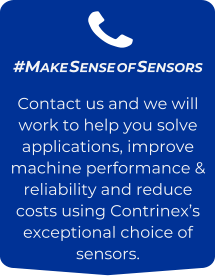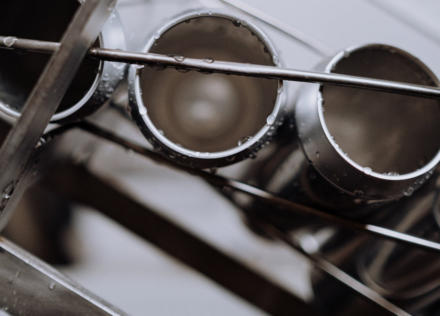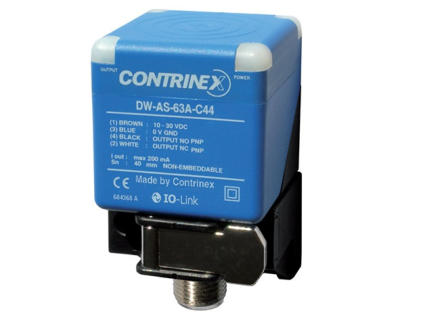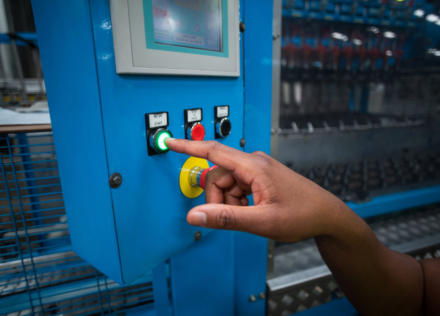(0121) 58 222 58 SALES@PLUSAUTOMATION.CO.UK

© 2021 - PLUS Automation Limited®

HELPING YOU #MAKE SENSE OF SENSORS







EXAMPLE APPLICATIONS
TO ILLUSTRATE THE WIDE-VARIETY OF APPLICATIONS SOLVED USING CONTRINEX SENSORS, WE HAVE POSTED A LARGE SELECTION OF EXAMPLE APPLICATIONS WHICH CAN BE SEEN BY CLICKING ON AN IMAGE. BELOW ARE A SELECTION OF SOME OF THESE APPLICATIONS:



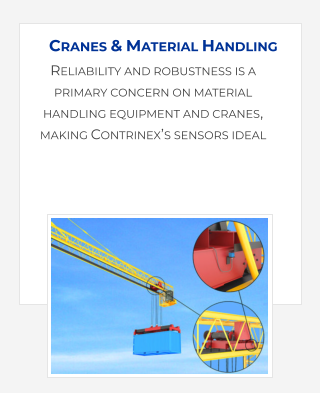
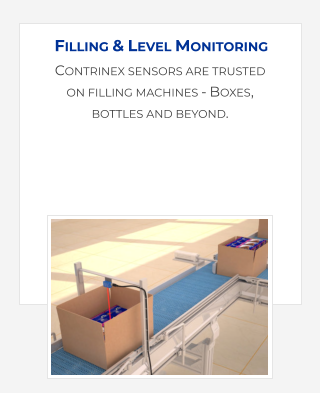
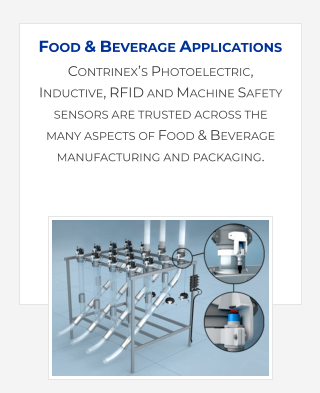
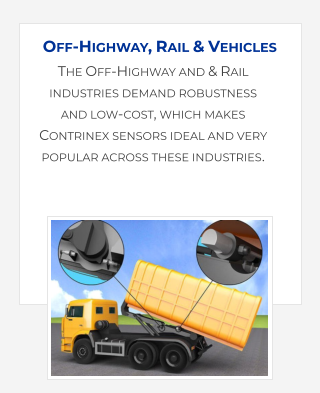
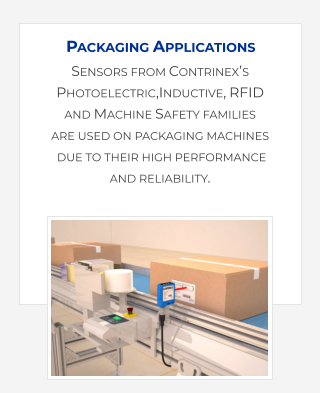
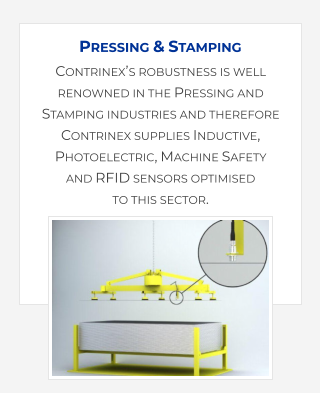
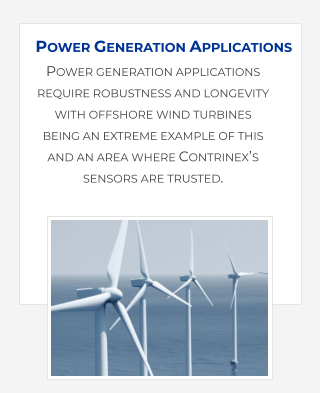
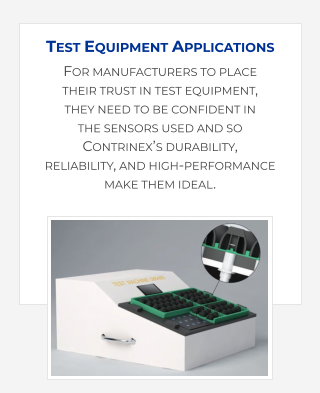

CUSTOMER VALUES
COST EFFECTIVE SOLUTION
SETUP TIMES REDUCED AND WORKLOADS RATIONALISED
EFFICIENT AUTOMATIC MANIPULATION OF MOULDING TOOLS
AVOIDANCE OF PRODUCTION FAULTS, DAMAGE TO TOOLS OR
PRESS AND RESULTING DOWNTIME
PROCESS SPEED AND CONSISTENCY ASSURED
PRODUCT ADVANTAGES
ROBUST CONSTRUCTION
PROVEN RELIABILITY
HIGH SWITCHING ACCURACY
IO-LINK INTERFACE INCLUDED – IDEAL FOR INDUSTRY 4
Automated presence and position checking of tools reduces
the set up times for hydraulic presses, improving machine
availability and utilisation.
CUSTOMER APPLICATION
The automotive industry uses automation extensively and an
automobile manufacturer wanted to automate the presence
and position checking of tools within their hydraulic presses.
The conventional downward-acting hydraulic presses are
equipped with sliding tables that hold the upper and lower
tools in position and allow them to be changed.
Automatic checking is required to ensure that both tool halves
are correctly positioned on the sliding table as they are being
prepared. Incorrect tool position, or absence of tool, can cause
damage or failure.
CUSTOMER SOLUTION
Contrinex’s cubic 40 x 40 x 40mm C44 inductive sensors from
their Basic 600 Series solve this application, due to their robust
industrial construction, proven reliability of its sensing
capabilities, high-performance, a choice of 15 to 40 mm
sensing distances and low-cost.
A sensor is installed on one corner of the sliding table and
adjusted to confirm the presence of a correctly positioned tool.
The accuracy in switching distance of this sensor means that
any deviation in tool position is detected. An incorrectly
positioned tool will therefore immediately trigger a process
stop. This position/absence check takes place with all the
speed expected from an automated factory process.
By preventing the presses from proceeding to the molding
process with incorrectly positioned or absent tools, this
automatic tool change sensor helps prevent production faults,
reduce downtime and avoid damage to the presses
themselves.
CONTRINEX SENSORS ARE RENOWNED FOR THEIR UNIQUE ROBUSTNESS,
PERFORMANCE AND RELIABILITY ON PRESS & STAMPING LINES.
A WIDE RANGE OF SENSORS OPTIMISED FOR THESE HARSH ENVIRONMENTS INCLUDE METAL-ENCASED
& EMBEDDABLE RFID TRANSPONDERS, MACHINE SAFETY SENSORS, A WIDE CHOICE OF PHOTOELECTRIC
SENSORS, DOUBLE-SHEET DETECTION, PLUS THE UNIQUELY ROBUST 700 SERIES INDUCTIVE SENSORS.
PRESS & ASSEMBLY APPLICATIONS

CUSTOMER VALUES
COST EFFECTIVE SOLUTION
SETUP TIMES REDUCED AND WORKLOADS RATIONALISED
EFFICIENT AUTOMATIC MANIPULATION OF MOULDING TOOLS
AVOIDANCE OF PRODUCTION FAULTS, DAMAGE TO TOOLS OR
PRESS AND RESULTING DOWNTIME
PROCESS SPEED AND CONSISTENCY ASSURED
PRODUCT ADVANTAGES
ROBUST CONSTRUCTION
PROVEN RELIABILITY
HIGH SWITCHING ACCURACY
IO-LINK INTERFACE INCLUDED – IDEAL FOR INDUSTRY 4
An automated tool-change process reduces setup times and
improves machine efficiency, but introduces the risk of
damage if the tool-press is not completely closed before its
moulding tools are changed.
Therefore a Contrinex inductive sensor is trusted to ensure that
the tool-press is completely closed, so that the moulding tools
can be changed safely and efficiently.
CUSTOMER APPLICATION
Hydraulic presses that are used to mould automotive body
parts have had their tool change automated.
The down-acting hydraulic presses which are common in
many industries, feature rams that hold the upper tool half in
position as they press down on the lower half.
To change tooling requires the detachment of the upper tool
half from the ram, putting it into the lower half, and sliding
both out of the press. Before the ram releases the top half for
any tool change, the tool pair must be in the closed position.
This ensures that both tool halves are perfectly aligned when
the automatic tool-change process starts, avoiding damage to
either tool or press and any consequent downtime.
CUSTOMER SOLUTION
The Contrinex DW-AS-603-M18-002 inductive sensor meets
the requirements of this application, due to its robust
industrial construction and the proven reliability of its sensing
capabilities - There is also the benefit that it is from Contrinex’s
lowest priced, ‘Basic’ ‘600’ series of inductive sensors.
A single sensor is mounted using an angle bracket on the
lower tool housing. Directly above it, a matching bracket on
the upper housing serves as the reference surface. Before
enabling tool release, this sensor is checked. Since the target
does not enter the switching range until the tool is fully closed,
premature tool release is prevented.
The accuracy in switching distance of these sensors means
that the upper tool half is only released when the tool is fully
and correctly closed.
The checking process is quick and reliable and prevents the
press from proceeding to the tool-change process with
incorrectly closed tools, to avoid downtime and damage to
tools and the press.

CUSTOMER VALUES
COST-EFFECTIVE, ACTIVE SAFEGUARDING
IMPROVED WORKPLACE ERGONOMICS
INCREASED PRODUCTIVITY ARISING FROM UNIMPEDED
LOADING AND UNLOADING
INDUSTRY-STANDARD INTERFACE REQUIRES MINIMAL
MODIFICATION TO CONTROL SYSTEMS
PRODUCT ADVANTAGES
PERMANENT AUTOCONTROL NOT USUALLY FOUND ON TYPE 2
SAFETY DEVICES
IP65 AND IP67 PROTECTION
NON-CONTACT OPERATING PRINCIPLES
EXCELLENT SAFETY RATING TO EN/ISO 13849-1 CAT. 2 PL C
AND IEC 61508 SIL 1
AOPD (ACTIVE OPTOELECTRONIC PROTECTIVE DEVICE) WITH
ALUMINIUM HOUSING AND M12 CABLE CONNECTOR
CUSTOMER SOLUTION
The company’s risk assessment confirms that Type 2 AOPDs
(active optoelectronic protective devices) would ensure
appropriate operator protection. Designed for applications
where the risk has been evaluated as moderate, Safetinex IEC
61496 Type 2 light curtains from Contrinex are rated to EN/ISO
13849-1 Category 2, Performance Level PL c and IEC 61508
Safety Integrity Level SIL 1, making them ideal for the
application.
The heat-staking press is housed in an open-fronted enclosure
with clear impact-resistant walls. The light curtain has an
operating range of up to 12 metres and a resolution of 30 mm,
ideal for hand protection; it safeguards the open front area of
the press, allowing easy access when required. The protected
height is 795mm, ensuring safe operation without impeding
the operator during loading and unloading.
Manufactured with rugged extruded aluminium housings and
IP65 + IP67 protection, these units are well-suited to the
production environment and will withstand shocks and
vibrations.
Industry-standard PNP normally-open configuration allows
connection to the customer’s control system via an integral 5-
pin M12 cable connector. These units have an integrated
alignment LED and permanent autocontrol – a feature not
usually found on Type 2 safety devices.
The new sensors take up much less space than the
mechanical guards they replaced, improving workplace
ergonomics. Loading and unloading is no longer impeded,
increasing productivity while actively safeguarding operators.
Safetinex Type 2 light curtains provide a reliable and cost-
effective solution.
During semi-automated pressing of assemblies manufacturers
use light curtains to preserve operator safety without
compromising production throughput. The active
optoelectronic protective device (AOPD), mounted directly in
front of each bench-mounted heat-press, prevents the press-
head from descending if it detects any intrusion in the
working area, halting the operating cycle immediately.
CUSTOMER APPLICATION
Heat-staking is a popular process for fastening metal parts to
plastic moldings, and is commonly used by manufacturers
during the production of sub-assemblies. At each station, an
operator loads a molding and one or more metal parts into a
slide-mounted assembly fixture. Once the components are
correctly inserted, the operator pushes the slide into position
beneath the press-head, triggering the automated heat-
staking cycle.
The heated press-head, which may reach temperatures in
excess of 350oC (660oF), descends toward the pre-positioned
components. It applies heat and pressure to specific areas of
the molding, causing a controlled thermal deformation that
creates a permanent joint between the metal parts and the
molding. Following a pre-determined dwell period, the head
returns to the raised position, ending the cycle; the operator
withdraws the slide and removes the assembly from the
fixture.
Existing mechanical safety barriers are cumbersome and
inconvenient; throughput is constrained as a result of the time
taken to open and close the guards during each cycle. The
company requires an alternative safety guard that provides
effective hand protection while allowing unobstructed loading
and unloading. It must be simple, space-saving and operate
reliably in the production environment.

CUSTOMER VALUES
RELIABLE, CONTINUOUS TOOL OPERATION IN TIME-SENSITIVE
PRODUCTION ENVIRONMENTS
SIGNIFICANT ENHANCEMENT OF TOOL FUNCTION WITH
MINIMAL EFFECT ON SIZE OR WEIGHT
LOW RISK OF INTERNAL DAMAGE DUE TO BEST-IN-CLASS
SENSING DISTANCES
INDUSTRY-STANDARD INTERFACE REQUIRES LITTLE
MODIFICATION TO CONTROL SYSTEMS
PRODUCT ADVANTAGES
SENSOR PERFORMANCE UNAFFECTED BY 500 BAR (7255 PSI)
OPERATING PRESSURE
CONDIST® TECHNOLOGY OF EXTRA DISTANCE FAMILY
DELIVERS BEST-IN-CLASS SENSING DISTANCES
SMALL, LIGHTWEIGHT EMBEDDABLE SENSORS WITH HIGH-
PRESSURE CAPABILITY
RUGGED INDUCTIVE SENSOR WITH METAL HOUSING AND
CERAMIC SENSING FACE
A manufacturer of cold-forming tools for joining sheet metal
uses position sensing to control the operation of a manual
punch-riveting tool. A high-pressure inductive sensor
mounted directly into the wall of a small pneumohydraulic
cylinder detects the position of the hydraulic ram, preventing
the operating cycle from starting unless the ram is fully
retracted.
CUSTOMER APPLICATION
Automotive technicians assembling prototype vehicle bodies
during pre-production use manual punch-riveting tools to join
individual sheet-metal parts. Several thousand joints are
required per vehicle, and tools must be compact since space is
often limited.
Bad joints, which are very costly to repair, can occur if the
technician does not set the tool correctly before triggering it.
During use, the tool-head is often partly hidden from view, so a
sensing system must confirm that the operating ram is fully
retracted and prevent the tool from operating if the ram is not
in the correct position.
A pneumohydraulic cylinder drives the ram, and the compact
nature of the tool limits the allowable sensor size. The sensing
face is exposed to the high-pressure side of the hydraulic
circuit, so the sensor must withstand continuous pressures up
to 500 bar (7255 psi) and pressure spikes of 1000 bar (14,510
psi).
CUSTOMER SOLUTION
Robust inductive sensors from the Contrinex Extra Distance
family, High Pressure range, withstand the high operating
pressure of this application. The extended operating distance
of patented Condist® technology allows the use of thick,
hermetically sealed ceramic discs on the sensing faces without
compromising the sensors’ performance.
These lightweight M5- and M8-diameter embeddable sensors
are 27 mm and 30 mm in length, respectively. The sensors are
mounted directly into the wall of the cylinder and do not
interfere with the normal operation of the tool. Sensing
distances of 1mm (M5 sensor) and 1.5 mm (M8 sensor)
eliminate any risk of internal mechanical damage through
contact with the ram.
The sensors have an industry-standard PNP normally-open
configuration and connect with the customer’s control system
via a flexible PUR-sheathed cable. Vacuum-encapsulated
electronics ensure excellent resistance to shock and vibration,
and no additional electrical or mechanical protection is
required.
Previously, users of the punch-riveting tools were unable to
check the position of the operating ram with the tool in situ
and either incurred downtime or risked costly bad joints.
Contrinex high-pressure inductive sensors satisfy the
manufacturer’s requirement for small, lightweight, ultra-
reliable sensors with an attractive total cost of ownership.

CUSTOMER VALUES
HIGHLY COST EFFECTIVE SOLUTION - SUBSTANTIALLY LOWER
COST THAN OTHER DOUBLE-SHEET DETECTION SOLUTIONS
SIMPLE SETUP AND USE
ELIMINATES MACHINE JAMS, BREAKAGE OF TOOLING AND SO
ELIMINATES PRODUCTION DOWNTIME
CORROSION-RESISTANT SENSORS WITHSTAND CLEANING
PRODUCT ADVANTAGES
UNIQUE TECHNOLOGY DEFIES LIMITS OF TRADITIONAL
INDUCTIVE SENSOR TECHNOLOGY
EXTREMELY ROBUST, IMPACT AND ABRASION RESISTANT IP68/
IP69K STAINLESS-STEEL RATED HOUSING
CORROSION-RESISTANT, V2A/ AISI 304 STAINLESS-STEEL,
FOOD-COMPATIBLE BODY
IO-LINK INTERFACE INCLUDED – IDEAL FOR INDUSTRY 4
A manufacturer of metal cans needs to ensure that the press
that applies and crimps the bottom onto the can body is fed
with only one bottom. Therefore a fast, non-contact and robust
checking mechanism is required.
CUSTOMER APPLICATION
A conveyor with a stainless-steel glide plate backed by a
permanent magnet ensures that the can bottoms travel
perfectly flat on the belt which transports them to the
assembly stage. If double-bottoms are fed into the assembly
stage, damage can be done to the press, tools can be broken,
and even the press becoming jammed will cause production
downtime.
To check that only one bottom is being fed to the assembly
stage whilst they are attached magnetically to the fast-moving
belt, requires a non-contact sensing solution. The thin gauge
of steel used to produce the can bottoms (~0.33 mm thick) is
too small for the customer’s normal automatic double-sheet
detector to work reliably.
CUSTOMER SOLUTION
Contrinex’s Extreme 700 Series sensors provide a robust and
simple, cost effective solution. They utilise their Condet®
technology to detect the mass of a target by inducing a
voltage in it, whereas a traditional inductive sensor would
induce the voltage only in the target’s surface.
The stainless-steel bodied sensor (DW-Ax-70X-M12) is mounted
approximately 4 – 5 mm above the dome of a can bottom. On
its own, the 0.33mm thick steel doom presents insufficient
mass to switch the sensor at this distance, however the
presence of a second bottom piece increases target mass
sufficiently to switch the sensor.
The inductive sensor triggers a rejection shoot whenever two
bottoms are detected as being stacked together and so
provide a robust and reliable system to protect the assembly
press.
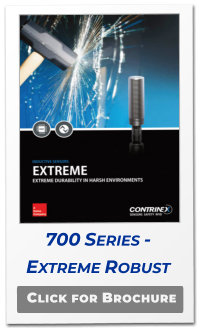
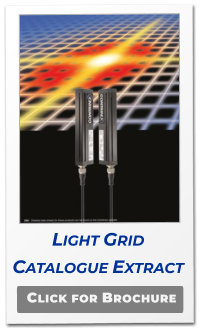
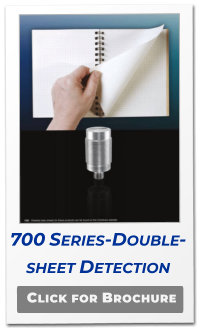
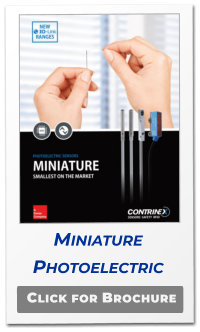

CUSTOMER VALUES
PROVEN TECHNOLOGY TO ENSURE HIGHLY RELIABLE FIT-&-
FORGET POKA YOKE QUALITY CONTROL WITH NO MANUAL
INTERVENTION
UNOBTRUSIVE SYSTEM THAT DOES NOT IMPACT UPON THE
WELDING STATION CYCYLE TIMES
FAST & EASY SWAP OUT IN CASE OF DAMAGE TO THE SENSOR
PRODUCT ADVANTAGES
COMPACT & ROBUST, ALUMINIUM EXTRUDED HOUSING - 40 X
20.5MM)
DIVERSE PORTFOLIO OFFERS EXCEPTIONAL RANGE OF SIZES -
100 TO 2,000MM HEIGHT AND 0.9 TO 25MM RESOLUTION
FAST & EASY INTEGRATION WITH M12 CONNECTORS
LOW COST, HIGH PERFORMANCE AND LONG SENSING RANGE
During manufacture of mechanical assemblies for automotive
production, an operator uses a manually operated machine to
assemble metal parts together. After assembly the operator
drops the assembly in a transport bin ready for dispatch. As
each assembly is placed in the bin, an infra-red light detection
grid sensor detects its presence and confirms that the welding
cycle has been completed correctly
CUSTOMER APPLICATION
In an automotive 1st tier supplier manufacturing plant, an
operator loads small parts by hand onto an assembly machine
and initiates the PLC-controlled cycle. After assembly the
operator drops the completed assembly into a metal bin used
to transport parts directly to the customer.
From time to time, un-assembled parts are placed in the bin,
resulting in rejection of entire batches of assemblies by the
customer. Manual inspection of each assembly is impractical; a
sensor system must detect the presence of each item as it is
dropped into the bin and check that the corresponding
welding cycle has been completed.
The sensing system must not increase the process cycle-time
and must detect parts as they are dropped into the open bin,
which is approximately 120cm (4ft) long and 90cm (3ft) wide.
Parts are around 15cm (6in) long and a sensor with a rapid
response time is necessary to detect fast-moving items.
Customer Solution
The Contrinex DGI range of infra-red light detection grids is
well-suited for this application. Comprising separate sender-
and receiver-units and constructed with rugged one-piece
aluminium-profile housings, these versatile sensor systems are
ideal for the busy production environment.
With response times from 0.8 to 4.8 milliseconds which are
faster than safety light-curtains and a choice of resolutions
from 0.9 to 25mm dependent upon the size of the light grid,
the DGI light detection grids range exceed the demanding
customer specification for rapid response and reliable
detection of the small parts.
The 8m range between sender and receiver and their compact
design enables easy mounting at each end of the transport
bin without impeding the operator or increasing the process
cycle time.
The DGI light detection grid sender only requires a power
supply connection and the receiver features two Push-Pull
(PNP + NPN), Light-ON+ Dark-ON, 4-pin M12 outputs,
simplifying installation.
The system detects the presence of any item passing through
the light curtain and immediately interrogates the PLC to
confirm that a welding cycle has been completed since
detection of the preceding item. If no welding cycle is
registered, the system interrupts the process and sounds an
alarm, alerting the operator.

CUSTOMER VALUES
RELIABLE DOUBLE-SHEET DETECTION ELIMINATES TOOL
DAMAGE AND DOWNTIME
COMPACT, ROBUST SENSOR ENSURES CONVENIENT,
UNOBTRUSIVE OPERATION
INCREASED FLEXIBILITY AS A SINGLE SENSOR DETECTS
SEVERAL DIFFERENT MATERIALS (EG CARBON STEEL,
STAINLESS STEEL & ALUMINIUM)
REDUCED COMPLEXITY AS SENSOR CONNECTS DIRECTLY TO
THE CUSTOMER’S CONTROL SYSTEM
PRODUCT ADVANTAGES
SENSOR SPECIALLY DEVELOPED FOR DETECTING MULTIPLE
OVERLAPPING METAL SHEETS
CONDET® TECHNOLOGY MAKES PERFORMANCE
INDEPENDENT OF TARGET MATERIAL
RUGGED INDUCTIVE SENSOR WITH ONE-PIECE STAINLESS
STEEL CONSTRUCTION
EXTENDED SENSING DISTANCE AVOIDS RISK OF MECHANICAL
DAMAGE
Contrinex’s innovative sensors provide affordable detection of
overlapping metal sheets. They can protect a press-line by
checking that two metal blanks are not presented to the
forming press, or alternatively ensure two pieces of metal are
present for example in an automotive welding assembly –
Sometimes two’s too many, but sometimes you just need two.
CUSTOMER APPLICATION
A producer of deep-drawn metal parts for the automotive
industry uses Contrinex’s double-sheet sensing to prevent
costly tool damage and downtime.
Deep drawing and other metal-forming techniques are widely
used in the automotive industry, which requires expensive
press tools to produce complex profiles from sheet metal
blanks. During high-volume production, an automated feeder
loads sheets of steel or aluminium to the press.
The metal sheets are lightly lubricated to reduce friction
during deep drawing, but the thin film of oil can cause two
sheets to stick together in the feeder. If the press operates with
such double sheets loaded, the forming tool will be damaged,
resulting in downtime and large repair costs. Therefore
sensing systems are used to check the material before it is
loaded.
Previously, the customer had trailed alternative sensor
technologies. All were excessively cumbersome and difficult to
set up, and most were unable to detect double sheets reliably.
Customer Solution
Contrinex offers a rugged, compact stainless-steel -bodied
sensor for the loading station, which checks each metal sheet
as it is presented by the feeder. If it detects a double sheet, the
material is rejected and the operating cycle inhibited, which
reduces expensive damage to tooling and improves OEE.
The sensor enables discrimination between single and double
metal sheets of a defined thickness of steel or aluminium in
the size range of 0.8 – 1.2mm thick.
A specialist version of Contrinex’s uniquely robust ‘700 Series’
family of inductive sensors, they share the benefits of being
both impact and abrasion resilient and having a case
machined from a single-piece of stainless-steel – These are the
sensors whose robustness is demonstrated by using them to
hammer in nails.
The reliability of their performance and robustness enable you
to minimise downtime and improve the OEE of Press-lines or
verify assembly operations.
WELCOME TO PLUS AUTOMATION LTD - EXPERTS IN SENSORS, WE WILL WORK TO HELP YOU
SOLVE YOUR APPLICATIONS, IMPROVE MACHINE PERFORMANCE & RELIABILITY AND REDUCE COSTS
USING CONTRINEX’S EXCEPTIONAL SENSORS - LET US HELP YOU #MAKE SENSE OF SENSORS








CUSTOMER VALUES
RELIABLE, CONTINUOUS TOOL OPERATION IN TIME-SENSITIVE
PRODUCTION ENVIRONMENTS
SIGNIFICANT ENHANCEMENT OF TOOL FUNCTION WITH
MINIMAL EFFECT ON SIZE OR WEIGHT
LOW RISK OF INTERNAL DAMAGE DUE TO BEST-IN-CLASS
SENSING DISTANCES
INDUSTRY-STANDARD INTERFACE REQUIRES LITTLE
MODIFICATION TO CONTROL SYSTEMS
PRODUCT ADVANTAGES
SENSOR PERFORMANCE UNAFFECTED BY 500 BAR (7255 PSI)
OPERATING PRESSURE
CONDIST® TECHNOLOGY OF EXTRA DISTANCE FAMILY
DELIVERS BEST-IN-CLASS SENSING DISTANCES
SMALL, LIGHTWEIGHT EMBEDDABLE SENSORS WITH HIGH-
PRESSURE CAPABILITY
RUGGED INDUCTIVE SENSOR WITH METAL HOUSING AND
CERAMIC SENSING FACE
A manufacturer of cold-forming tools for joining sheet metal
uses position sensing to control the operation of a manual
punch-riveting tool. A high-pressure inductive sensor
mounted directly into the wall of a small pneumohydraulic
cylinder detects the position of the hydraulic ram, preventing
the operating cycle from starting unless the ram is fully
retracted.
CUSTOMER APPLICATION
Automotive technicians assembling prototype vehicle bodies
during pre-production use manual punch-riveting tools to join
individual sheet-metal parts. Several thousand joints are
required per vehicle, and tools must be compact since space is
often limited.
Bad joints, which are very costly to repair, can occur if the
technician does not set the tool correctly before triggering it.
During use, the tool-head is often partly hidden from view, so a
sensing system must confirm that the operating ram is fully
retracted and prevent the tool from operating if the ram is not
in the correct position.
A pneumohydraulic cylinder drives the ram, and the compact
nature of the tool limits the allowable sensor size. The sensing
face is exposed to the high-pressure side of the hydraulic
circuit, so the sensor must withstand continuous pressures up
to 500 bar (7255 psi) and pressure spikes of 1000 bar (14,510
psi).
CUSTOMER SOLUTION
Robust inductive sensors from the Contrinex Extra Distance
family, High Pressure range, withstand the high operating
pressure of this application. The extended operating distance
of patented Condist® technology allows the use of thick,
hermetically sealed ceramic discs on the sensing faces without
compromising the sensors’ performance.
These lightweight M5- and M8-diameter embeddable sensors
are 27 mm and 30 mm in length, respectively. The sensors are
mounted directly into the wall of the cylinder and do not
interfere with the normal operation of the tool. Sensing
distances of 1mm (M5 sensor) and 1.5 mm (M8 sensor)
eliminate any risk of internal mechanical damage through
contact with the ram.
The sensors have an industry-standard PNP normally-open
configuration and connect with the customer’s control system
via a flexible PUR-sheathed cable. Vacuum-encapsulated
electronics ensure excellent resistance to shock and vibration,
and no additional electrical or mechanical protection is
required.
Previously, users of the punch-riveting tools were unable to
check the position of the operating ram with the tool in situ
and either incurred downtime or risked costly bad joints.
Contrinex high-pressure inductive sensors satisfy the
manufacturer’s requirement for small, lightweight, ultra-
reliable sensors with an attractive total cost of ownership.

CUSTOMER VALUES
COST-EFFECTIVE, ACTIVE SAFEGUARDING
IMPROVED WORKPLACE ERGONOMICS
INCREASED PRODUCTIVITY ARISING FROM UNIMPEDED
LOADING AND UNLOADING
INDUSTRY-STANDARD INTERFACE REQUIRES MINIMAL
MODIFICATION TO CONTROL SYSTEMS
PRODUCT ADVANTAGES
PERMANENT AUTOCONTROL NOT USUALLY FOUND ON TYPE 2
SAFETY DEVICES
IP65 AND IP67 PROTECTION
NON-CONTACT OPERATING PRINCIPLES
EXCELLENT SAFETY RATING TO EN/ISO 13849-1 CAT. 2 PL C
AND IEC 61508 SIL 1
AOPD (ACTIVE OPTOELECTRONIC PROTECTIVE DEVICE) WITH
ALUMINIUM HOUSING AND M12 CABLE CONNECTOR
CUSTOMER SOLUTION
The company’s risk assessment confirms that Type 2 AOPDs
(active optoelectronic protective devices) would ensure
appropriate operator protection. Designed for applications
where the risk has been evaluated as moderate, Safetinex IEC
61496 Type 2 light curtains from Contrinex are rated to EN/ISO
13849-1 Category 2, Performance Level PL c and IEC 61508
Safety Integrity Level SIL 1, making them ideal for the
application.
The heat-staking press is housed in an open-fronted enclosure
with clear impact-resistant walls. The light curtain has an
operating range of up to 12 metres and a resolution of 30 mm,
ideal for hand protection; it safeguards the open front area of
the press, allowing easy access when required. The protected
height is 795mm, ensuring safe operation without impeding
the operator during loading and unloading.
Manufactured with rugged extruded aluminium housings and
IP65 + IP67 protection, these units are well-suited to the
production environment and will withstand shocks and
vibrations.
Industry-standard PNP normally-open configuration allows
connection to the customer’s control system via an integral 5-
pin M12 cable connector. These units have an integrated
alignment LED and permanent autocontrol – a feature not
usually found on Type 2 safety devices.
The new sensors take up much less space than the
mechanical guards they replaced, improving workplace
ergonomics. Loading and unloading is no longer impeded,
increasing productivity while actively safeguarding operators.
Safetinex Type 2 light curtains provide a reliable and cost-
effective solution.

CUSTOMER VALUES
COST EFFECTIVE SOLUTION
SETUP TIMES REDUCED AND WORKLOADS RATIONALISED
EFFICIENT AUTOMATIC MANIPULATION OF MOULDING TOOLS
AVOIDANCE OF PRODUCTION FAULTS, DAMAGE TO TOOLS OR
PRESS AND RESULTING DOWNTIME
PROCESS SPEED AND CONSISTENCY ASSURED
PRODUCT ADVANTAGES
ROBUST CONSTRUCTION
PROVEN RELIABILITY
HIGH SWITCHING ACCURACY
IO-LINK INTERFACE INCLUDED – IDEAL FOR INDUSTRY 4
An automated tool-change process reduces setup times and
improves machine efficiency, but introduces the risk of
damage if the tool-press is not completely closed before its
moulding tools are changed.
Therefore a Contrinex inductive sensor is trusted to ensure that
the tool-press is completely closed, so that the moulding tools
can be changed safely and efficiently.
CUSTOMER APPLICATION
Hydraulic presses that are used to mould automotive body
parts have had their tool change automated.
The down-acting hydraulic presses which are common in
many industries, feature rams that hold the upper tool half in
position as they press down on the lower half.
To change tooling requires the detachment of the upper tool
half from the ram, putting it into the lower half, and sliding
both out of the press. Before the ram releases the top half for
any tool change, the tool pair must be in the closed position.
This ensures that both tool halves are perfectly aligned when
the automatic tool-change process starts, avoiding damage to
either tool or press and any consequent downtime.
CUSTOMER SOLUTION
The Contrinex DW-AS-603-M18-002 inductive sensor meets
the requirements of this application, due to its robust
industrial construction and the proven reliability of its sensing
capabilities - There is also the benefit that it is from Contrinex’s
lowest priced, ‘Basic’ ‘600’ series of inductive sensors.
A single sensor is mounted using an angle bracket on the
lower tool housing. Directly above it, a matching bracket on
the upper housing serves as the reference surface. Before
enabling tool release, this sensor is checked. Since the target
does not enter the switching range until the tool is fully closed,
premature tool release is prevented.
The accuracy in switching distance of these sensors means
that the upper tool half is only released when the tool is fully
and correctly closed.
The checking process is quick and reliable and prevents the
press from proceeding to the tool-change process with
incorrectly closed tools, to avoid downtime and damage to
tools and the press.

CUSTOMER VALUES
HIGHLY COST EFFECTIVE SOLUTION - SUBSTANTIALLY LOWER
COST THAN OTHER DOUBLE-SHEET DETECTION SOLUTIONS
SIMPLE SETUP AND USE
ELIMINATES MACHINE JAMS, BREAKAGE OF TOOLING AND SO
ELIMINATES PRODUCTION DOWNTIME
CORROSION-RESISTANT SENSORS WITHSTAND CLEANING
PRODUCT ADVANTAGES
UNIQUE TECHNOLOGY DEFIES LIMITS OF TRADITIONAL
INDUCTIVE SENSOR TECHNOLOGY
EXTREMELY ROBUST, IMPACT AND ABRASION RESISTANT IP68/
IP69K STAINLESS-STEEL RATED HOUSING
CORROSION-RESISTANT, V2A/ AISI 304 STAINLESS-STEEL,
FOOD-COMPATIBLE BODY
IO-LINK INTERFACE INCLUDED – IDEAL FOR INDUSTRY 4
A manufacturer of metal cans needs to ensure that the press
that applies and crimps the bottom onto the can body is fed
with only one bottom. Therefore a fast, non-contact and robust
checking mechanism is required.
CUSTOMER APPLICATION
A conveyor with a stainless-steel glide plate backed by a
permanent magnet ensures that the can bottoms travel
perfectly flat on the belt which transports them to the
assembly stage. If double-bottoms are fed into the assembly
stage, damage can be done to the press, tools can be broken,
and even the press becoming jammed will cause production
downtime.
To check that only one bottom is being fed to the assembly
stage whilst they are attached magnetically to the fast-moving
belt, requires a non-contact sensing solution. The thin gauge
of steel used to produce the can bottoms (~0.33 mm thick) is
too small for the customer’s normal automatic double-sheet
detector to work reliably.
CUSTOMER SOLUTION
Contrinex’s Extreme 700 Series sensors provide a robust and
simple, cost effective solution. They utilise their Condet®
technology to detect the mass of a target by inducing a
voltage in it, whereas a traditional inductive sensor would
induce the voltage only in the target’s surface.
The stainless-steel bodied sensor (DW-Ax-70X-M12) is mounted
approximately 4 – 5 mm above the dome of a can bottom. On
its own, the 0.33mm thick steel doom presents insufficient
mass to switch the sensor at this distance, however the
presence of a second bottom piece increases target mass
sufficiently to switch the sensor.
The inductive sensor triggers a rejection shoot whenever two
bottoms are detected as being stacked together and so
provide a robust and reliable system to protect the assembly
press.

CUSTOMER VALUES
COST EFFECTIVE SOLUTION
SETUP TIMES REDUCED AND WORKLOADS RATIONALISED
EFFICIENT AUTOMATIC MANIPULATION OF MOULDING TOOLS
AVOIDANCE OF PRODUCTION FAULTS, DAMAGE TO TOOLS OR
PRESS AND RESULTING DOWNTIME
PROCESS SPEED AND CONSISTENCY ASSURED
PRODUCT ADVANTAGES
ROBUST CONSTRUCTION
PROVEN RELIABILITY
HIGH SWITCHING ACCURACY
IO-LINK INTERFACE INCLUDED – IDEAL FOR INDUSTRY 4
Automated presence and position checking of tools reduces
the set up times for hydraulic presses, improving machine
availability and utilisation.
CUSTOMER APPLICATION
The automotive industry uses automation extensively and an
automobile manufacturer wanted to automate the presence
and position checking of tools within their hydraulic presses.
The conventional downward-acting hydraulic presses are
equipped with sliding tables that hold the upper and lower
tools in position and allow them to be changed.
Automatic checking is required to ensure that both tool halves
are correctly positioned on the sliding table as they are being
prepared. Incorrect tool position, or absence of tool, can cause
damage or failure.
CUSTOMER SOLUTION
Contrinex’s cubic 40 x 40 x 40mm C44 inductive sensors from
their Basic 600 Series solve this application, due to their robust
industrial construction, proven reliability of its sensing
capabilities, high-performance, a choice of 15 to 40 mm
sensing distances and low-cost.
A sensor is installed on one corner of the sliding table and
adjusted to confirm the presence of a correctly positioned tool.
The accuracy in switching distance of this sensor means that
any deviation in tool position is detected. An incorrectly
positioned tool will therefore immediately trigger a process
stop. This position/absence check takes place with all the
speed expected from an automated factory process.
By preventing the presses from proceeding to the molding
process with incorrectly positioned or absent tools, this
automatic tool change sensor helps prevent production faults,
reduce downtime and avoid damage to the presses
themselves.
PRESS & ASSEMBLY
APPLICATIONS
CONTRINEX SENSORS ARE RENOWNED FOR THEIR
UNIQUE ROBUSTNESS, PERFORMANCE AND
RELIABILITY ON PRESS & STAMPING LINES.
A WIDE RANGE OF SENSORS OPTIMISED FOR HARSH
ENVIRONMENTS INCLUDE METAL-ENCASED &
EMBEDDABLE RFID TRANSPONDERS, MACHINE
SAFETY SENSORS, A WIDE CHOICE OF
PHOTOELECTRIC SENSORS, DOUBLE-SHEET
DETECTION, PLUS THE ROBUST 700 SERIES.
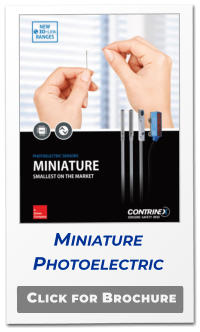
Customer Solution
The Contrinex DGI range of infrared light detection grids is
well-suited for this application. Comprising separate sender-
and receiver-units and constructed with rugged one-piece
aluminium-profile housings, these versatile sensor systems are
ideal for the busy production environment.
With response times from 0.8 to 4.8 milliseconds which are
faster than safety light-curtains and a choice of resolutions
from 0.9 to 25mm dependent upon the size of the light grid,
the DGI light detection grids range exceed the demanding
customer specification for rapid response and reliable
detection of the small parts.
The 8m range between sender and receiver and their compact
design enables easy mounting at each end of the transport
bin without impeding the operator or increasing the process
cycle time.
The DGI light detection grid sender only requires a power
supply connection and the receiver features two Push-Pull
(PNP + NPN), Light-ON+ Dark-ON, 4-pin M12 outputs,
simplifying installation.
The system detects the presence of any item passing through
the light curtain and immediately interrogates the PLC to
confirm that a welding cycle has been completed since
detection of the preceding item. If no welding cycle is
registered, the system interrupts the process and sounds an
alarm, alerting the operator.
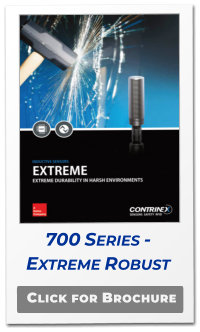
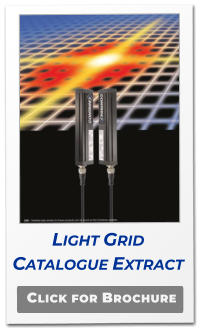
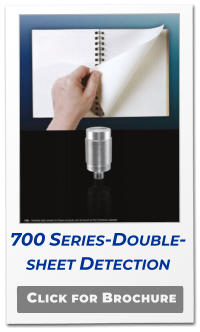

CUSTOMER VALUES
PROVEN TECHNOLOGY TO ENSURE HIGHLY RELIABLE FIT-&-
FORGET POKA YOKE QUALITY CONTROL WITH NO MANUAL
INTERVENTION
UNOBTRUSIVE SYSTEM THAT DOES NOT IMPACT UPON THE
WELDING STATION CYCYLE TIMES
FAST & EASY SWAP OUT IN CASE OF DAMAGE TO THE SENSOR
PRODUCT ADVANTAGES
COMPACT & ROBUST, ALUMINIUM EXTRUDED HOUSING - 40 X
20.5MM)
DIVERSE PORTFOLIO OFFERS EXCEPTIONAL RANGE OF SIZES -
100 TO 2,000MM HEIGHT AND 0.9 TO 25MM RESOLUTION
FAST & EASY INTEGRATION WITH M12 CONNECTORS
LOW COST, HIGH PERFORMANCE AND LONG SENSING RANGE
During manufacture of mechanical assemblies for automotive
production, an operator uses a manually operated machine to
weld metal parts together. After welding, the operator drops
the assembly in a transport bin ready for dispatch. As each
assembly is placed in the bin, an infra-red light detection grid
sensor detects its presence and confirms that the welding
cycle has been completed correctly
CUSTOMER APPLICATION
In an automotive 1st tier supplier manufacturing plant, an
operator loads small parts by hand onto a resistance-welding
machine and initiates the PLC-controlled welding cycle. After
welding, the operator drops the completed assembly into a
metal bin used to transport parts directly to the customer.
From time to time, unwelded parts are placed in the bin,
resulting in rejection of entire batches of assemblies by the
customer. Manual inspection of each assembly is impractical; a
sensor system must detect the presence of each item as it is
dropped into the bin and check that the corresponding
welding cycle has been completed.
The sensing system must not increase the process cycle-time
and must detect parts as they are dropped into the open bin,
which is approximately 120cm (4ft) long and 90cm (3ft) wide.
Parts are around 15cm (6in) long and a sensor with a rapid
response time is necessary to detect fast-moving items.

CUSTOMER VALUES
RELIABLE DOUBLE-SHEET DETECTION ELIMINATES TOOL
DAMAGE AND DOWNTIME
COMPACT, ROBUST SENSOR ENSURES CONVENIENT,
UNOBTRUSIVE OPERATION
INCREASED FLEXIBILITY AS A SINGLE SENSOR DETECTS
SEVERAL DIFFERENT MATERIALS (EG CARBON STEEL,
STAINLESS STEEL & ALUMINIUM)
REDUCED COMPLEXITY AS SENSOR CONNECTS DIRECTLY TO
THE CUSTOMER’S CONTROL SYSTEM
PRODUCT ADVANTAGES
SENSOR SPECIALLY DEVELOPED FOR DETECTING MULTIPLE
OVERLAPPING METAL SHEETS
CONDET® TECHNOLOGY MAKES PERFORMANCE
INDEPENDENT OF TARGET MATERIAL
RUGGED INDUCTIVE SENSOR WITH ONE-PIECE STAINLESS
STEEL CONSTRUCTION
EXTENDED SENSING DISTANCE AVOIDS RISK OF MECHANICAL
DAMAGE
Contrinex’s innovative sensors provide affordable detection of
overlapping metal sheets. They can protect a press-line by
checking that two metal blanks are not presented to the
forming press, or alternatively ensure two pieces of metal are
present for example in an automotive welding assembly –
Sometimes two’s too many, but sometimes you just need two.
CUSTOMER APPLICATION
A producer of deep-drawn metal parts for the automotive
industry uses Contrinex’s double-sheet sensing to prevent
costly tool damage and downtime.
Deep drawing and other metal-forming techniques are widely
used in the automotive industry, which requires expensive
press tools to produce complex profiles from sheet metal
blanks. During high-volume production, an automated feeder
loads sheets of steel or aluminium to the press.
The metal sheets are lightly lubricated to reduce friction
during deep drawing, but the thin film of oil can cause two
sheets to stick together in the feeder. If the press operates with
such double sheets loaded, the forming tool will be damaged,
resulting in downtime and large repair costs. Therefore
sensing systems are used to check the material before it is
loaded.
Previously, the customer had trailed alternative sensor
technologies. All were excessively cumbersome and difficult to
set up, and most were unable to detect double sheets reliably.
Customer Solution
Contrinex offers a rugged, compact stainless-steel -bodied
sensor for the loading station, which checks each metal sheet
as it is presented by the feeder. If it detects a double sheet, the
material is rejected and the operating cycle inhibited, which
reduces expensive damage to tooling and improves OEE.
The sensor enables discrimination between single and double
metal sheets of a defined thickness of steel or aluminium in
the size range of 0.8 – 1.2mm thick.
A specialist version of Contrinex’s uniquely robust ‘700 Series’
family of inductive sensors, they share the benefits of being
both impact and abrasion resilient and having a case
machined from a single-piece of stainless-steel – These are the
sensors whose robustness is demonstrated by using them to
hammer in nails.
The reliability of their performance and robustness enable you
to minimise downtime and improve the OEE of Press-lines or
verify assembly operations.
WELCOME TO PLUS AUTOMATION LTD - EXPERTS IN SENSORS,
WE WILL HELP YOU SOLVE YOUR APPLICATIONS, IMPROVE MACHINE
PERFORMANCE & RELIABILITY AND REDUCE COSTS USING CONTRINEX’S
EXCEPTIONAL SENSORS - LET US HELP YOU #MAKE SENSE OF SENSORS



During semi-automated pressing of assemblies manufacturers
use light curtains to preserve operator safety without
compromising production throughput. The active
optoelectronic protective device (AOPD), mounted directly in
front of each bench-mounted heat-press, prevents the press-
head from descending if it detects any intrusion in the
working area, halting the operating cycle immediately.
CUSTOMER APPLICATION
Heat-staking is a popular process for fastening metal parts to
plastic moldings, and is commonly used by manufacturers
during the production of sub-assemblies. At each station, an
operator loads a molding and one or more metal parts into a
slide-mounted assembly fixture. Once the components are
correctly inserted, the operator pushes the slide into position
beneath the press-head, triggering the automated heat-
staking cycle.
The heated press-head, which may reach temperatures in
excess of 350oC (660oF), descends toward the pre-positioned
components. It applies heat and pressure to specific areas of
the molding, causing a controlled thermal deformation that
creates a permanent joint between the metal parts and the
molding. Following a pre-determined dwell period, the head
returns to the raised position, ending the cycle; the operator
withdraws the slide and removes the assembly from the
fixture.
Existing mechanical safety barriers are cumbersome and
inconvenient; throughput is constrained as a result of the time
taken to open and close the guards during each cycle. The
company requires an alternative safety guard that provides
effective hand protection while allowing unobstructed loading
and unloading. It must be simple, space-saving and operate
reliably in the production environment.
















